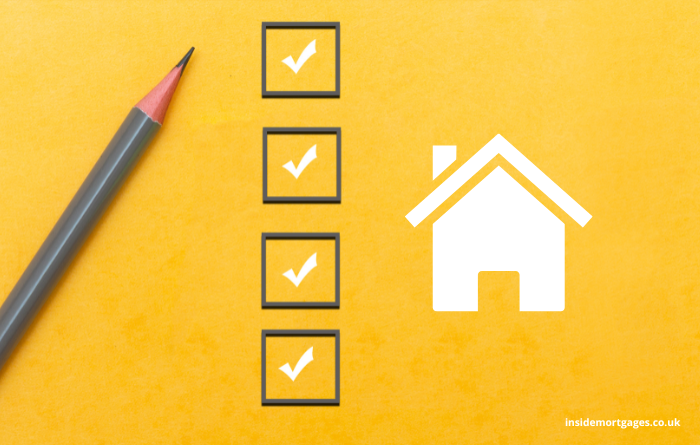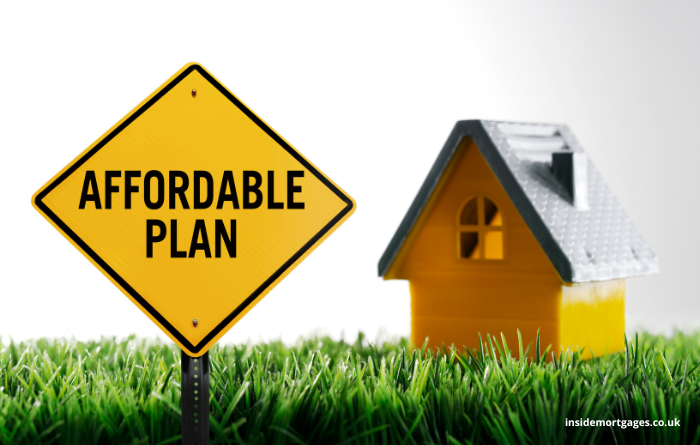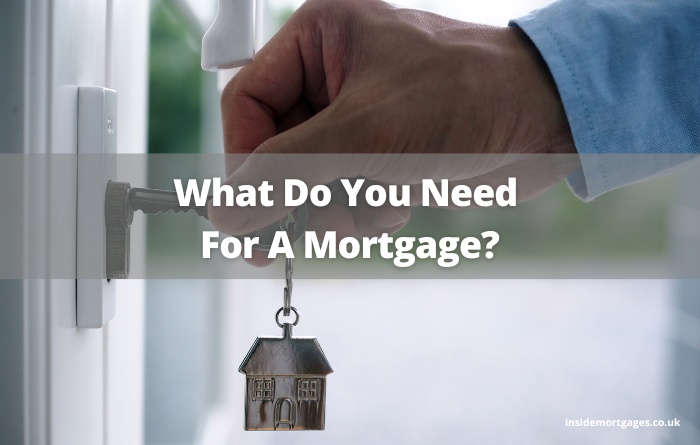What Do You Need For A Mortgage? The Definitive List.
If you want to get on the property ladder soon or have found your dream home and are looking into getting the finance that will secure it, then now is the time to ask ‘what do you need for a mortgage?’ To get a mortgage, you’ll need a mortgage lender, a deposit (usually at least 5% of the property purchase price), and enough income to cover monthly repayments of the mortgage. To apply you will need documents that prove; your identity, employment status, assets, debts, liabilities, and where your deposit came from, plus details of the property that you want to buy. You will also need to purchase appropriate building insurance before your mortgage is granted and depending on your credit rating, type of job, and level of income, you may also need a guarantor.
Essential Things You Will Need For A Mortgage
- At least 5% of the purchase price as a deposit
- A mortgage lender willing to provide you with a mortgage
- ID – usually a photo ID such as a driving license/passport plus proof of address from utility bills and bank statements
- Proof of employment or income – payslips or SA302 and tax year overviews if you are self employed
- Breakdown of assets, debts, and liabilities
- A paper trail showing how you accumulated your deposit amount
- Details of the property that you want to buy
- A credit check – with a good rating
- Buildings & Contents Insurance before the mortgage is approved
- Enough income to cover monthly mortgage repayments
- Enough cash to cover the mortgage, solicitor and valuation fees
Non Essential Things That You Might Need
- A mortgage broker
- A mortgage in principle can be helpful, but not essential
- If you have a poor credit history, outstanding loans or low or unreliable income, you may need a guarantor
Getting Prepared For A Mortgage
The first step to getting a mortgage is to ensure that you have enough deposit, you have taken steps to ensure that your credit score is as good as it can be and that you have gathered together all of the required documentation needed to submit to a mortgage lender.
It’s a good idea to have paper copies and electronic copies of all documents needed so that they are easily accessible when requested during the mortgage application process.
Taking these steps before applying will help to ensure the process runs as smoothly as possible and that you’re ready to approach mortgage lenders or mortgage brokers. These advisors can help you to compare mortgage deals to find the one that best suits your needs based on your financial circumstances and start your mortgage application process.
Read on to find out exactly how to pull everything you need to get a mortgage.
Essential Things You Will Need For A Mortgage

Deposit
A mortgage deposit is a lump sum of money that you’ll need to pay to secure a mortgage. In the UK, the average deposit is around 20% of the property’s value, although some lenders will offer loans with smaller deposits with the smallest deposit accepted being 5%. The size of your deposit will affect the interest rate you’re offered and how much you’ll ultimately pay for your home, so the more you can save as a deposit, the better interest rates you can access.
Mortgage Lenders
A mortgage lender is a financial institution such as a bank, credit union, or other financial institution that offers loans to borrowers to purchase a property. As the loan is secured by the property itself, you must be able to repay the loan in full, otherwise, your home could be repossessed by the lender.
There are a huge number of lenders to choose from, each catering to different types of applications. From those with poor credit, the self-employed, to high street lenders. Whoever you choose, you should only approach lenders on the financial services register who are regulated by the financial services authority.
ID
Lenders will require proof of ID for everyone on the mortgage application which will need to be done with the right documents showing approved photo ID and proof of main address.
The most widely accepted forms of photo ID are a passport or driving license. If you don’t have either of these forms of identification, there are other options available but they will require additional documentation such as a signature on a signed letter known as an ID1 form from a solicitor or other professional in the community who can verify that you are who you say you are. For the proof of address, you will need a recent utility bill, stating your name and address that is dated within the last 3 months, a council tax bills, or bank statements with your current address.
Proof of employment or income
You will need at least 3 months worth of payslips and a P60 for your current role if you are employed. If you are self-employed, you will need to supply the last 2-3 years’ SA302 documents and tax year overviews for your tax returns.
Individual lenders may different criteria for proving employment or income, but this is the most common. You will also need statements to provide proof of any additional sources of income, such as investments or rental properties.
If you can, try not to take on a new job in the 6 months before your mortgage application, that can aid the mortgage process, and if you have recently started a new job, or get paid weekly, you can still get a mortgage but you may need to provide additional documentation to the lender to prove your financial stability and proof of income.
Breakdown Of Assets, Debts, And Liabilities
When applying for a mortgage it’s important to have a clear understanding of your financial situation. This means taking a close look at your assets, debts, and liabilities, and every mortgage lender will want to know this information too.
Your assets are everything you own that has value, including your savings, investments, and property. Your debts are the money you owe to others, including money owed on credit cards, loans, and mortgages. Your liabilities are your obligations to others, including alimony and child support payments.
By understanding your financial situation, you’ll be in a better position to get the best mortgage possible.
Proof Of Deposit
You will need to provide at least 3 months’ bank statements which can also be online statements that are printed out, for your current account plus any other bank accounts that will be used to make up your cash deposit amount. If you have been given money as a gift or loan, you’ll need to provide documentation that shows this. Your mortgage provider will usually provide a template letter for you and the gifter to fill out confirming the terms of the loan or whether it’s a gift that does not need to be paid back.
Property Details
The lender will ask you questions about the property so that they can assess its value and the risk of providing a loan against it. You should be able to get the information needed from the marketing brochure provided by the Estate Agent, or the seller’s information packs provided at the start of the conveyancing process. This will include things like the number of bedrooms, the address, the construction material and the purchase price.
A Credit Check
All credible lenders will order a credit report on you to assess your creditworthiness as a borrower. There are lots of things you can do in advance of a mortgage application to get your credit rating as high as possible – check out this guide from Martin Lewis, Money Saving Expert for more details.
The better your credit score is, the more chance you have of being approved for a mortgage and you will have access to better interest rates too. Simple things like ensuring that your personal details are up to date with all major institutions that impact your credit score like your local authority, ensuring your electoral roll record is correct, and banks have your right details can all help.
Buildings & Contents Insurance
Most lenders require building and contents insurance is taken out by the borrower before the mortgage funds are released. To prevent any delay when you’re near to completion, it makes sense to get several quotes and compare offers available to you for comprehensive buildings insurance that must be set to start from the date you exchange.
Repayment Affordability

Lots of borrowers worry about getting their deposits together and give less thought to the actual repayment amounts. To be approved for a mortgage, you must be able to show that you have enough disposable income after debts and liabilities are paid each month to cover the repayments on your mortgage, even if interest rates go up.
Cash For Fees
There are a few additional costs that you’ll need to be aware of and budget for when taking out a mortgage and during the conveyancing process.
- Mortgage fees – these can include an arrangement fee, valuation fee, and legal fees.
- Conveyancing fees – this is the amount owed to your solicitor or conveyancer for dealing with the legal aspects of buying a property
- Search fees – paid to your conveyancer for arranging environmental and title searches on the property to uncover any hidden issues or debts on the property
- Stamp duty – this is a tax that you’ll need to pay on properties over a certain price.
- Insurance – you’ll need to take out buildings insurance to cover the cost of repairs to your property.
Non Essential Things That You Might Need
A mortgage broker
Mortgage brokers are professionals who work with banks and other financial institutions to find the best mortgage loans for their clients. While you can apply for a mortgage on your own, working with a broker can save you time and money.
A good broker will have a strong relationship with lenders and knows the ins and outs of the industry. As such, they can often get their clients better terms than they could on their own and can help their clients navigate the complex application process and make sure that all of the necessary paperwork is in order, which as you can see from this article, can be quite a task!
A Mortgage In Principle
Whilst you don’t need a mortgage in principle to get a mortgage, it can be helpful in the early stages of the home-buying process. A mortgage in principle is a document from a lender that states how much they’re willing to lend you, based on the information about your financial situation that you have provided. This can be helpful when you’re searching for a property, as it shows estate agents and sellers that you’re serious about buying and will be able to get a mortgage that covers the property price.
A MIP can also help to speed up the mortgage application process, as the lender will already have an idea of your financial situation. It’s important to remember that a mortgage in principle is not a guarantee that you’ll be offered a mortgage, as the lender will still need to carry out checks before they make a final decision.
A Guarantor
A guarantor is a person who agrees to take on financial responsibility for another person if they default on a loan or debt. In the context of mortgages, a guarantor is usually a close family member or friend who agrees to cover the mortgage repayments if the borrower is unable to do so. This can be an important way of helping someone get on the property ladder.
Some buyers may not have a reliable income, have large outstanding debts, earn a low salary, or have a poor credit history, which can all impact their mortgage affordability assessment outcome in the eyes of a lender. A guarantor can improve their suitability because by taking on this responsibility to pay in the unlikely event that the mortgage applicant can’t, they are effectively saying that they are confident in the borrower’s ability to repay the loan.
As such, guarantors can play an important role in helping people to access homeownership. Given the current housing market, this support is more important than ever.
The Mortgage Process Summarised
We hope this article has answered the question “what do you need for a mortgage”. To put it all into context, once you have worked through the stage of gathering the requirements outlined above, the actual process of getting a mortgage will look like this:
- The first step is to gather all of the required documentation. Once you have everything that you need, you can start to compare mortgage deals either on your own or with a mortgage broker to find the financial product that best suits your needs.
- When you’ve found a deal that you’re happy with, you can apply for a mortgage in principle. This is a document from the lender that states how much they’re willing to lend you.
- Once you have a mortgage in principle, you can start to look for a property. Once you’ve found a property that you’re interested in, the next step is to make an offer.
- If your offer is accepted, the next step is to apply for a mortgage. The lender will carry out several checks and request the information outlined in this article to assess your affordability and decide whether or not to offer you a mortgage.
- If your mortgage is approved, the next step is to complete all of the necessary legal paperwork and arrange a date for completion with your solicior. On the day of completion, the funds for your mortgage will be transferred to the seller and you will become the owner of the property.
Remember, when shopping for a mortgage lender, it is important to compare offers from several different sources and consider using a mortgage advisor to get the best deal possible.

